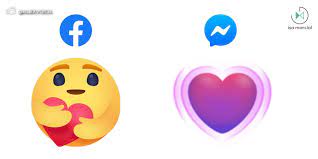Facebook reactions are special moving emojis with which users can express their gratitude or displeasure with a post on the social network or with another user.

The reaction of the emoji embracing a heart, called “Care” is intended to generate unity, connection and support among Facebook users
The reactions come to complement the “like” button. Facebook launched the first five reactions in 2015: “Love”, “Haha”, “Wow”, “Sad” and “Angry” and also created a later one on a temporary basis to celebrate the month of May or LGTBI pride .
During the COVID-19 pandemic, the social network has accelerated the development of a new reaction , which apparently had been planned for a long time, but which social distancing forced to be launched as soon as possible. How did it come about? Apparently, as Facebook has recognized, the idea was to create a reaction to provide love and support among users. A hug represents that feeling very clearly.
However, the great challenge was to make it clear that it was a hug. In WhatsApp emojis, for example, users are never clear that the emoji with two open hands is to send a hug, because its design places their hands in a different way than what a hug symbolizes or expresses. How to achieve it on Facebook?
On the other hand, the company faced another challenge: within the Facebook reaction tray there was no space to include a new emoji, especially in the mobile version. Drawing a hug emoji became difficult for creators, because the size available to do it was scarce . At the beginning, the team created different ways and designs of how this emoji could react by manifesting a hug, but they were not convinced by any.
They drew it in a human form, with balloons, flowers, ribbons, hands, arms, among other attributes… and they tried without success for months. However, the arrival of the covid hastened its launch: users needed a way to send a bigger token of love.
Furthermore, the pandemic and social distancing generate two scenarios. The first was that need that people had to give a hug, but at the same time they had to address situations where people did not want or could receive a hug.
The different ways in which a hug can be interpreted became the new challenge for the Facebook team. However, everyone understood that a hug was always going to be positive , no matter the situation. In addition, its use could be combined with the reaction of love, widely used among the reactions of the users. Despite the fact that the situation could become complicated for a simple emoji, they went ahead.
In the creation process led by John Evans, vice president of product design at Facebook, several brainstormings took place. Animations were added and they started looking for the ideal name. Although it was not easy, they came up with a name that symbolizes union, connection and support, which resulted in a reaction from Facebook that would be called “Care” or “I care” .
After finalizing its design, Facebook asked a group of internal employees for their opinion. Among the recommendations they made was to tilt the heart to one side to provide more space for the facial features of the reaction. They wanted the emoji to show their face better, expressing affection, but not from a smile, but from the full gesture of the emoji. After fine-tuning these details, “Care” was ready to be introduced to the more than 2.6 billion Facebook users.